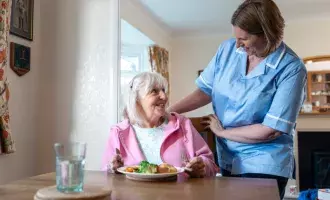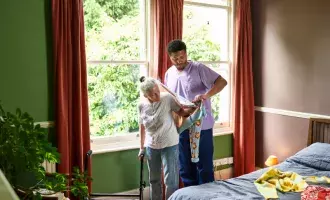Many people believe that the Covid-19 pandemic will be a catalyst for lasting change in the UK’s towns, cities and local communities.
But while lockdowns may have been the accelerant for this new direction, Jo Dennis-Jones, Head of National Planning at GL Hearn, says the fire has been burning for years.
“We’ve been talking about town centres for such a long time because they’re so important to communities,” she explains. “Planning is a tool for facilitating positive change but, in order to create meaningful, sustainable spaces, local authorities will need a clear vision, collaboration with experienced partners and strong political leadership.”
It will be important to consider what people really want from their town centres and then determine how these needs can be met. “It’s not an overnight change,” she adds.
Wayne Hemingway, an English designer and co-founder of Hemingway Design, says change is long overdue, and that important aspects of society had been forgotten before the pandemic: “When the focus was on profit above all else, many people developed a ‘shop till you drop’ mentality which resulted in huge waste.”
As a result, younger generations have suffered and are becoming activists for change. “There’s no point going back to ‘normal’ because normal wasn’t right. This is a big opportunity to make this world a better place,” says Wayne.
In the past year there has been more focus on going outdoors, with people realising the value of these spaces. Wayne anticipates that there will be a growth in demand for parklets, pet areas, traffic reduction, improved promenades and community activities that reflect people’s newfound pursuits. For example, at Media City in Salford, sheds and greenhouses were recently decorated by local artists to reflect the local community. “Later the spaces were donated to local restaurants to support them in delivering socially-distanced dining,” says Wayne. “It really increased footfall in the area.”
Nobody wants to see the demise of town centres, and Jo says there will be plenty of opportunity to repurpose spaces and put them to better use. Meanwhile, Wayne adds that traditional activities like shopping can be made more interactive and engaging: “A lot more people are interested in sustainable shopping and seeing how things are made.”
How will this become reality?
Paul Dowling, Regeneration and Transport Manager at North Tyneside Council, says “a vision and masterplan” will be essential to redeveloping local communities. “Our coastline has been
rediscovered locally,” he says. “What we need to do is to create a place that adds to that offer. We need to be guiding developments to create places that people want to spend time in.”
Although it may not result in immediate financial gain for local councils, the long-term investment will boost local environments, make communities happier and, over time, bring in new business.
Part of making sure that regenerated communities deliver what people want will be to ask the public for their opinions. “We need the confidence to be brave,” says Mark Dally, Managing Director of Regulatory & Place Solutions at Capita Local Public Services. “People know what they want. We need to recognise what they want today and build on the history of our local places.”
He also expects a rise in ‘multi-function’ spaces in communities, for example libraries that also serve as cafes, meeting spaces and a place to sell handmade goods.
The role of tech
From work to education and entertainment, technology became more important than ever during the lockdowns. According to Carole Ciliberti, Director of Smart Places at Capita Real Estate, the past year has increased people’s trust in technology and made them less skeptical about its role, as well as opening doors for them to use technology in ways they hadn’t previously considered.
“Data availability, quality and awareness is also going to be important in shaping places of future,” she says. “In making local authority decisions, they need to be based on data, analytics and predictive analytics. It will make a huge difference to how places are managed.”
But enabling communities to build and regenerate goes beyond technology. “We’re still operating a lot in a siloed way. A huge difference will be integration of different sectors and working out how they can work as a joint ecosystem. We need a holistic approach,” she says.
To achieve this, Wayne says that diversity will be key. “The beauty of a town centre is in the eye of the beholder and that can look different to different people.” He believes it’s vital the diversity of our communities is reflected in the planning stages to ensure we build communities that are a true reflection of all the people who live there.







